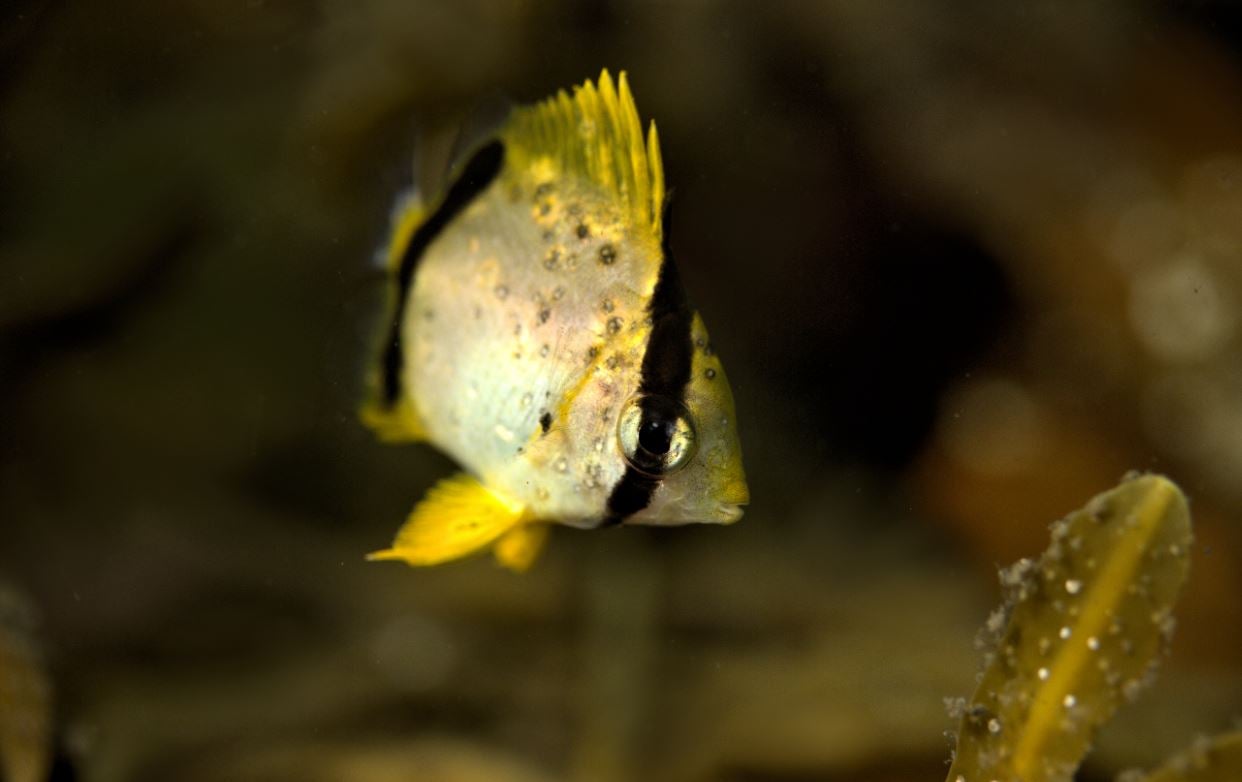Tropical fish spotted thousands of miles away in northern Canada as climate crisis escalates
‘Up until eight years ago tropical fish seemed to be extremely rare. The last couple years I’ve been spotting them on almost every dive,’ says scuba diver Lloyd Bond

Your support helps us to tell the story
From reproductive rights to climate change to Big Tech, The Independent is on the ground when the story is developing. Whether it's investigating the financials of Elon Musk's pro-Trump PAC or producing our latest documentary, 'The A Word', which shines a light on the American women fighting for reproductive rights, we know how important it is to parse out the facts from the messaging.
At such a critical moment in US history, we need reporters on the ground. Your donation allows us to keep sending journalists to speak to both sides of the story.
The Independent is trusted by Americans across the entire political spectrum. And unlike many other quality news outlets, we choose not to lock Americans out of our reporting and analysis with paywalls. We believe quality journalism should be available to everyone, paid for by those who can afford it.
Your support makes all the difference.Colourful tropical fish like butterfly fish and scrawled filefish are being spotted in northern Canadian waters as the climate crisis escalates.
Scuba diver and photographer Lloyd Bond – who has scuba dived in Nova Scotia for 23 years – has told The Independent he has seen a dramatic increase in fish whose normal habitat is thousands of miles away.
“Up until eight years ago tropical fish seemed to be extremely rare,” Mr Bond said.
“The last couple years I’ve been spotting them on almost every dive from the end of August to mid to late October. Butterfly fish, greater amberjacks, rudder fish, yellow tail snapper seem to be in larger numbers.”
“I’ve photographed at least a dozen species, and have seen that many more recorded by other divers. Some species seem to arrive as juveniles like the butterfly fish and band tail puffer [about the size of a penny] while others seem to be fully mature.”
Mr Bond said he also noticed changes in local species such as the wolf eel, which was reasonably common but now he spots it just once a year at most.
According to data collected by Fisheries and Oceans Canada, ocean temperatures started to sharply climb in 2010.
Dr Bryce Stewart from the University of York said marine species do occasionally end up well outside their normal ranges, especially if they get caught up in currents or storms, but this is happening more and more.
“That is partly because more people are out there in and on the oceans these days, and social media makes sharing unusual sightings much easier than in the past,” he said.
“But overall there is no doubt that many marine species are changing their ranges, moving away from equator towards the poles as the water warms.”
Monitoring programmes around the UK show that we are increasingly seeing Mediterranean species in UK waters.
“There will be winners and losers in the ocean as it continues to warm with climate change. But overall biodiversity is expected to decline. There is also the threat of invasive species and diseases causing damage to existing species and habitats when they move to new areas,” said Dr Stewart.
Last month the planet’s most northerly human settlement – Alert, in Nunavut – experienced an “unprecedented” heatwave. Canada’s weather agency confirmed that temperatures peaked at 21C – far exceeding the July average for the area of around 5C.
If serious action is not taken by world governments to cut global greenhouse gas emissions, ocean temperatures are likely to rise by up to 3.2C by the end of the century.
This damage will be compounded by ocean acidification, another impact of higher CO2 levels in the atmosphere, as well as changes in the water’s oxygen content.
Join our commenting forum
Join thought-provoking conversations, follow other Independent readers and see their replies
Comments